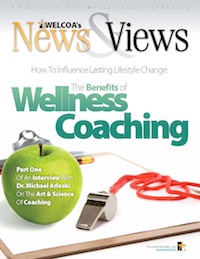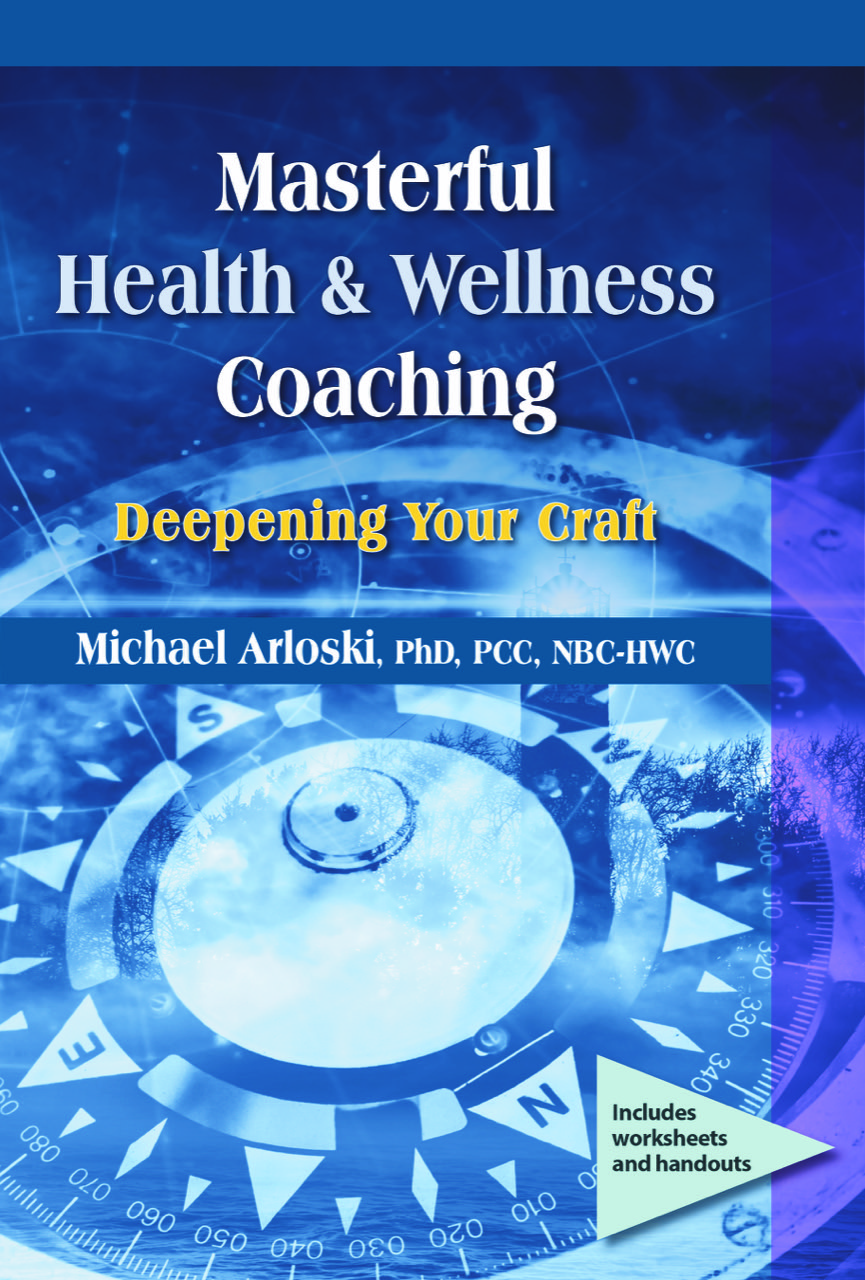More Creative Health & Wellness Coaching

A stimulating conversation with a colleague launched me on an exploration of how we can allow ourselves to be more creative in the coaching work we do. A mark of a more masterful coach that I’ve always observed is their ability to be creative in the moment in ways that enhanced the coaching process. Watching them work, I would see inventive experiments emerge that were not just tricks from an old reliable bag, but fresh adventures for the client to try out. What allows a coach to come up with something new that fits the moment and catalyzes the client’s growth? Creativity has relevance to health and wellness coaching in a number of ways.
Creativity and Wellness
Connecting with our own creative energy can actually enhance our health. An article in Forbes (https://www.forbes.com/sites/ashleystahl/2018/07/25/heres-how-creativity-actually-improves-your-health/?sh=239e16fd13a6) “Here’s How Creativity Actually Improves Your Health” shows at least five ways how it does. From increasing happiness, reducing dementia, boosting our immune system, and making us smarter to improving our mental health, creativity can play a vital role in our health and wellness.
Creative Self-Expression and Mental Health
“Creative self-expression is taking an idea and bringing it to life. A way to assert one’s creativity is through art, dance, songs, paintings, music, writing, and many other similar arts. The need to express oneself is believed to be important for mental health. When you suppress yourself, you’re harming no one else but your own self.” (https://goodmenproject.com/mental-health-awareness/how-creative-self-expression-may-help-maintain-mental-health/) As we engage in a creative process it helps focus our minds. Instead of the multi-tasking temptations of our over-stimulated world, we experience the flow of the present moment as we focus on only one thing. The above article also describes how creative self-expression can help to overcome trauma and reduce depression. It also addresses how it can help to increase self-esteem.

Years ago, I coached a client who knew that the more he engaged in creative self-expression, the more centered, grounded, and effective he would be in his business as a busy insurance agency owner. My coaching with this very self-directed person was mostly about helping him stay on track and accountable to himself with his pottery, photography, and writing. The more he expressed himself this way, the more confident and self-assured he was in his business.
Creativity Coaching
A special niche in the life coaching world is that of Creativity Coaching. There is even a Creativity Coaching Association to help coaches who work helping their clients to tap more into the creative process. “Creativity Coaches are similar to life coaches but focus more specifically on your creative work. Creativity Coaches help you to develop your artistic and humanistic talents. Creativity Coaches have helped thousands of artists, writers, inventors, entrepreneurs and other creative souls to accomplish their dreams.” (https://www.creativitycoachingassociation.com)

Creativity in the Coaching Process
There are two aspects of creativity in the coaching process. One is helping our clients to reconnect with their own creativity and the other is the use of creativity by the coach.
In a short, but excellent article, (https://coachingfederation.org/blog/creativity-in-coaching) Nour Azhari contends that the ICF definition of coaching – “partnering with clients in a thought-provoking and creative process that inspires them to maximize their personal and professional potential” implies that a key role is played by creativity. She shows how this can help clients break unhealthy patterns of behavior. “With the help of a coach, clients can embrace their creativity and envision a desired future state in which they’ve let go of their unwanted patterns. Consequently, they can start to feel more aligned with achievement. In other words, the unconscious mind viscerally believes that the change has already happened, which leads to the development of more self-serving thoughts and behaviors. This shift in the thought-emotion-behavior triad becomes the foundation for change, providing the motivation to move from where they currently are to where they want to be.”
The author goes on to show how creativity can also help clients to identify alternative strategies for existing problems. I recently did this with a client by simply helping them break out of a stuck pattern of thinking where they felt like their business development was going nowhere. By using metaphor to shift perspective from how far she had to go to be successful to how far she had come already, she was able to see a much more optimistic way forward.

The Creative Coach
Azhari outlines how at least three processes can be used by the coach to enhance client access to their creativity.
1. Establish psychological safety. When we provide those Rogerian Facilitative Conditions of Coaching – empathy, warmth, genuiness and unconditional positive regard – our clients can engage in creative and innovative thinking safe from judgment.
2. Guide clients into a state of mindfulness. I like to define mindfulness simply as “noticing without judgment”. Again, from Azhari’s blog “It has been found to help develop many of the skills that support greater creativity including decreased fear of judgment, better working memory, more empathy and open-mindedness, and the ability to respond instead of reacting impulsively to difficult situations. Guiding your client into mindful states through meditations, relaxation exercises, or visualizations will help them foster the skills they need to enhance their creative abilities.”
3. Tap into our creativity. “In order to master the art of coaching and answer the question, ‘what will be most useful for my client at this particular moment?’, the coach needs to access their own creativity. A competent coach is flexible and innovative in their approach, responding spontaneously to the client’s needs without any attachments to what ‘generally works.’ In fact, coaches directly inspire their clients to push their boundaries solely by modeling this creative behavior.” (https://coachingfederation.org/blog/creativity-in-coaching)
Connecting With Our Own Creativity – What Helps and Hinders
 Julia Cameron, author of The Artist’s Way, and The Right to Write, (https://juliacameronlive.com) says that “When a creative artist is fatigued it is often from too much inflow, not too much outflow.” Think about that. When you are hit with so much input from so many sources throughout your day, what do you experience? Anxiety, overwhelm, worry, or perhaps we just call it stress. Not exactly the scenario for the rise of creativity.
Julia Cameron, author of The Artist’s Way, and The Right to Write, (https://juliacameronlive.com) says that “When a creative artist is fatigued it is often from too much inflow, not too much outflow.” Think about that. When you are hit with so much input from so many sources throughout your day, what do you experience? Anxiety, overwhelm, worry, or perhaps we just call it stress. Not exactly the scenario for the rise of creativity.
When I wrote Wellness Coaching for Lasting Lifestyle Change and Masterful Health & Wellness Coaching: Deepening Your Craft, (https://wholeperson.com/cgi-wholeperson/sb/productsearch.cgi?storeid=*101fd218a90764414afb) what helped the most were the writing retreats that I took. Camping or going to friend’s cabin in the Rocky Mountains allowed me to get away from email, the internet, and the chores of daily life. I would mix in writing with breaks where hiking and trout fishing allowed my mind to not just rest, but to subconsciously continue to work while I meditated through walking and working a fly line back and forth. Contiguous time emersed in the writing process allowed me to conceptualize those books in ways that an hour here or there would never permit. My wife Deborah calls it turning down the volume when we can away from the noise of life. Perhaps getting away from the ‘noise’ allows us to really hear what is going on.
Structure and Creativity
“Structure is your friend. Don’t make it your master.”
Michael Arloski
Reducing input helps free up our creativity, so does having a helpful balance with our use of structure in the coaching process. Structure provides the framework that we build on with our clients. Having a real coaching methodology enables a productive process with a beginning, a middle and an end. Clients take stock of their wellness, get clear about what they want – their Well Life Vision, and create a Wellness Plan to get there. The key is for coaches to uniquely adapt coaching structure in each session, and overall, to our individual client and what is happening in the moment. (Dancing In The Moment: Awareness of The Coaching Process/Interaction) (Dancing In The Moment: Three Keys To Thinking On Your Feet During The Coaching Process)
When coaches fall into using scripts, protocols, or formats that they rigidly adhere to creativity is seldom given a chance to emerge. It’s letting go of that attachment to coaching routine that opens new possibilities.
The Creative Stretch
Allowing ourselves to be creative as we coach is rewarding to both us and our clients. It keeps the coaching alive, fresh, and fun. When we decide to let our creativity materialize it comes down to a decision about risk. Is this creative experiment a ‘stretch’ or a ‘risk’? We want to stay in the ‘stretch zone’ and help our clients decide if something is entering their ‘risk zone’. We enter this territory first of all, by asking their permission for what we propose. We may suggest that our client try on a new perspective, play with metaphor, engage in a visualization process, tell a story, or use any number of creative ideas. We stay within our scope of practice as a coach and help our clients to grow.
“Creativity occurs in the moment, and in the moment we are timeless.”
“The creative process is a process of surrender, not control.”
Both quotes by Julia Cameron
 Michael Arloski, Ph.D., PCC, NBC-HWC is CEO and Founder of Real Balance Global Wellness – a world leader in health and wellness coach training. (www.realbalance.com). Doctor Arloski is a pioneering architect of the field of health and wellness coaching. He and his company have trained thousands of coaches around the world.
Michael Arloski, Ph.D., PCC, NBC-HWC is CEO and Founder of Real Balance Global Wellness – a world leader in health and wellness coach training. (www.realbalance.com). Doctor Arloski is a pioneering architect of the field of health and wellness coaching. He and his company have trained thousands of coaches around the world.








Only registered and logged in readers can leave comments.